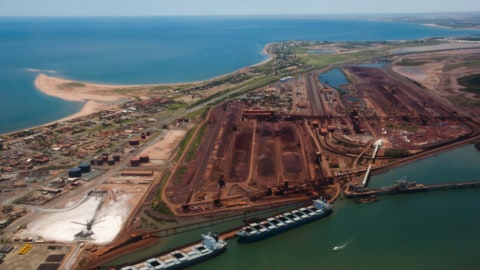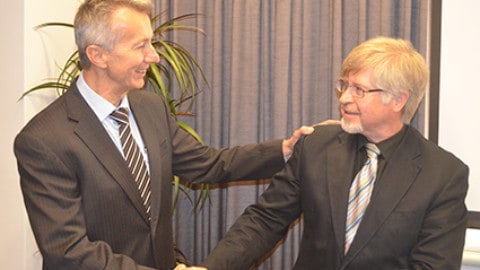Earlier this year, Unitywater announced that it would undertake a major upgrade of its Kawana Sewage Treatment Plant (STP), one of their key sewage treatment facilities. The upgrade will not only expand the plant’s capacity, it will also incorporate Unitywater’s first waste-to-energy facility. As one of Unitywater’s largest facilities, the Kawana STP plays an important role in keeping coastal waterways healthy, serving Sunshine Coast communities from Pelican Waters to Buddina.
As one of Unitywater’s largest facilities, the Kawana STP plays an important role in keeping coastal waterways healthy, serving Sunshine Coast communities from Pelican Waters to Buddina.
As the population of the Sunshine Coast grows, the volume of sewage treated by the Kawana STP will continue to increase from its present rate of 20 million litres a day. The upgrade to the facility will allow it to continue to provide high treatment standards as it handles increased sewage loads.
In addition to population growth, Unitywater has identified the Kawana STP as the future central sewage treatment plant for the Sunshine Coast. Areas such as South Buderim, Chancellor Park and Sippy Downs, which are currently connected to the Maroochydore STP, are planned to be serviced by the Kawana STP in the near future.
Looking to the long term, Unitywater is considering the requirement for treating sewage on the Sunshine Coast and believes that Kawana STP may ultimately need to treat the sewage for an equivalent of 600,000 people – over six times its current capacity.
Building for the future
Simon Taylor, Executive Manager Infrastructure Planning and Capital Delivery at Unitywater, said that the upgrade is focused on ensuring Unitywater has the infrastructure to cater for future population growth.
“We are investing $73.9 million to upgrade the Kawana sewage treatment plant (STP) which will significantly increase its current capacity, from 90,000 people to 150,000 people. Further investment planned over the coming decades will ensure that we keep ahead of the increasing population.”
Engineering group Monadelphous won the contract for the project and started construction recently, with the upgrade expected to be completed by December 2018.
The new plant will incorporate sewage treatment technology that means the current site can accommodate a larger plant as it expands over the long term.
“The upgrade will incorporate a biotechnical process that requires less infrastructure to be built,” said Mr Taylor. “The moving bed biofilm reactor (MBBR) process is a type of wastewater treatment where small plastic pieces known as ‘carriers’ are used to grow special bacteria, which then consume the impurities from incoming sewage.”
This technology requires less space than other treatment processes as the bacteria can be concentrated into a smaller area.
“As part of the upgrades, we will be installing an anaerobic digester where bacteria turn sewage into methane-rich biogas,” said Mr Taylor. ”We are currently undertaking a feasibility study to determine the best way to optimise that gas and turn it into energy. In this way, we have the potential to cut our electricity bills at Kawana STP.”
Transporting liquids and gases from one part of the plant to another is a very important part of the overall process and the plant will contain a wide range of new pumps to help with this. Selecting the right pumps
Selecting the right pumps
According to Mr Taylor, from the outset of the project design process, Unitywater provided a detailed specification for pumping systems to Monadelphous. With their design and technology partners, Monadelphous will complete the procurement, installation, and testing of pumps on site as part of the upgrade.
EPC Manager Kawana STP K150 Upgrade Project Jason Keating from Monadelphous said “On site at Kawana there are a wide variety of pumping applications including water, sewage, sludge, oil and grease, sand and grit and chemicals and, as a result, we have selected a range of pumping types including helical rotary load pumps, centrifugal pumps to best suit requirements.
“Monadelphous has worked in water infrastructure for over 10 years, and we’ve worked with these types of pumps on previous projects – so we’re confident of their capabilities and reliability.
“In accordance with Unitywater’s mandated equipment list requirements, Monadelphous has sourced pumps from local Australian agents with a known history for reliability and local support provision.”
For Unitywater, the pump selection process begins with several key factors in mind: reliable operation, minimal downtime, reduced maintenance, longevity, efficient operation, and capital cost.
“Unitywater uses a whole-of-life analysis when selecting pumps so that we find the right balance between the upfront costs and entire running costs of the pumps,” said Mr Taylor.
For Monadelphous, the focus is on ensuring they comply with Unitywater’s detailed specifications and processing condition requirements, while also factoring in total lifecycle cost of the pump (including purchase and maintenance costs) and energy efficiency.
For Unitywater, energy efficiency is an important consideration. “Electricity is one of the major costs when running a sewage treatment plant and we are very focused on reducing our total energy consumption,” said Mr Taylor.
“Pumping fluids around the plant uses a significant amount of energy and while we are conscious of this, we also look at whole-of-life cost factors when choosing pumps.” Making waste-to-energy work
Making waste-to-energy work
Unitywater is continuing to investigate the waste-to-energy component of the STP through a feasibility study being carried out over the last seven months with support from the Australian Renewable Energy Agency (ARENA). Prior to this, a series of scoping studies and pre-feasibility investigations had been undertaken.
“The concept of recovering energy from waste is not new, however our concept looks at accepting multiple variable waste streams, in addition to sewage sludge,” said Mr Taylor.
“These waste streams might include liquid organics such as fats, oils and greases from industry and businesses like restaurants and cafes. We believe that this additional feedstock might serve to improve the biogas production at smaller scale sewage treatment plants like Kawana, where traditionally sewage biosolids would be insufficient to economically sustain a cogeneration engine.
“Through anaerobic co-digestion, the combination of the liquid organic wastes with the sewage sludge will serve to break down and produce extra biogas, which in our case is will be used to generate energy.
“It’s really exciting to think that we can take this waste that would otherwise end up in landfill and turn it into renewable bioenergy to help power the sewage treatment plant.”
















